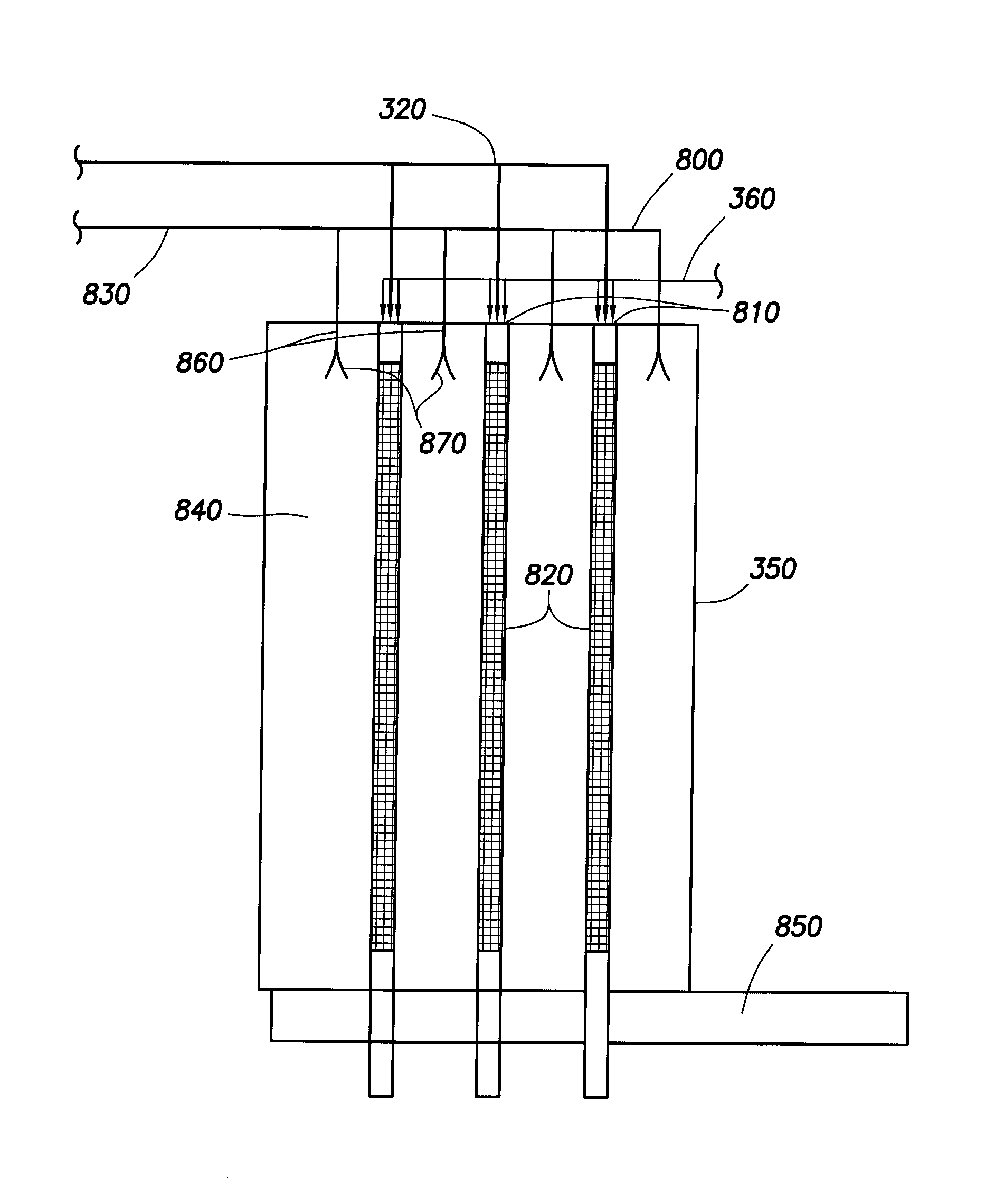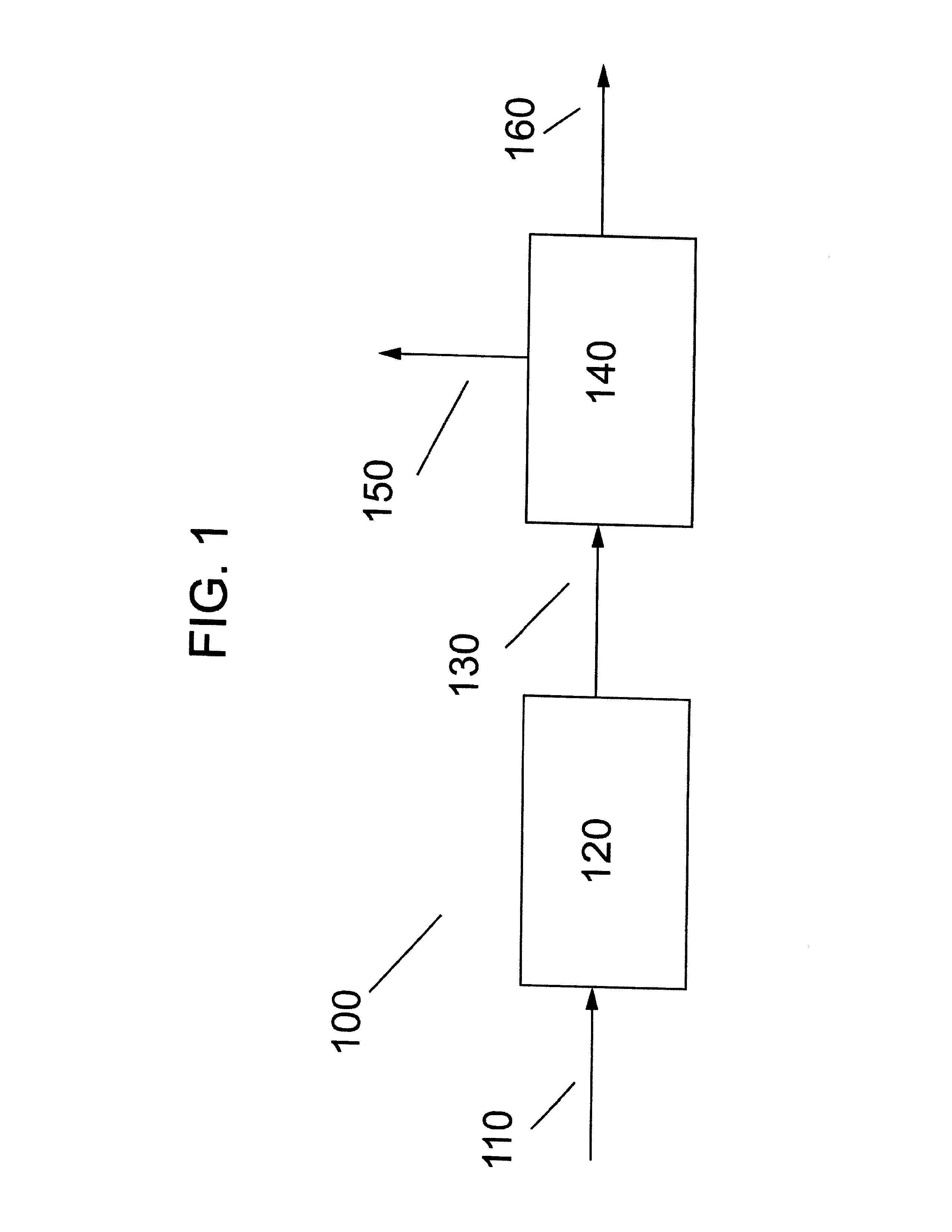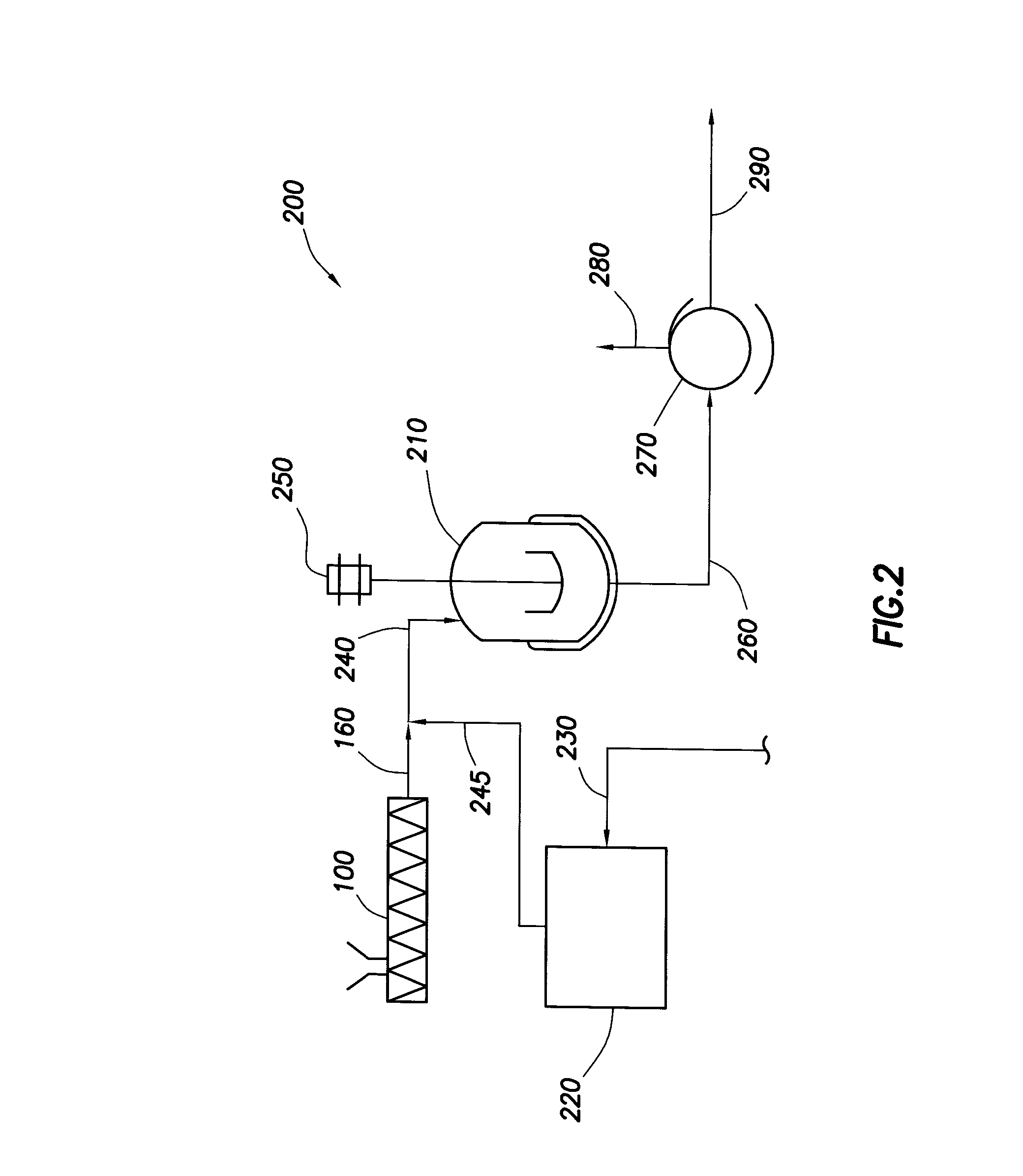Depolymerization of Plastic Materials
a technology of plastic materials and depolymerization, applied in the field of depolymerization of waste materials, can solve the problems of difficult scaling to commercial size, unprofitable traditional processes for reclaiming styrenic polymer waste, and limited reclaimed plastics production process
- Summary
- Abstract
- Description
- Claims
- Application Information
AI Technical Summary
Benefits of technology
Problems solved by technology
Method used
Image
Examples
example 1
[0081]A 1″ O.D. single tube reactor was packed with a base layer of ¼″ stainless steel balls and a small layer of potassium hydroxide on top of the balls. Reactor conditions were held as follows:
WaterRate 2NitrogenMolarPreheatOutletOil FeedCarrierBased onFurnaceCat BedPressurePolystyreneReactorRateGas FlowTolueneZones ° C.Temp ° C.(psig)in ToluenePressure~2.6 g / min300 ml / min0.9 ml / min6506002510 wt %1.7 bar
[0082]After 11 days, no pressure drop across the reactor was observable. Styrene monomer in the reactor outlet was approximately 6.9%. Styrene yield varied but held between 65% and 70%. Heavies yield also held at between 15% and 20%. AMS and ethylene benzene concentrations increased over the 11 days, from a low for AMS of approximately 3.% at the beginning to approximately 3.5% at the end of the 11 day run, and ethylene benzene having a low of approximately 0.75% at the beginning to approximately 1.0% at the end of the run.
example 2
[0083]Run conditions for Example 2 were the same as Example 1 except that the polystyrene in toluene percentage was increased 10.3%. Styrene content in the effluent increased to 7.1%.
example 3
[0084]Run conditions for Example 4 where the same as Example 1, except that Polystyrene 825E (HIPS) (91% styrene content) was used. After two days, the styrene content of the reactor effluent was 6.3% with a yield of 63%. The effluent from the reactor had the following makeup:
Liquid Product%Styrene6.31Toluene91.15AMS0.33Stilbene0.07Benzene0.09Ethyl Benzene0.16Heavies / Unknown1.58
[0085]While there was only 6.3wt % styrene in the reactor effluent, 825E contains 7wt % rubber, meaning the actual styrene monomer content without the rubber would be approximately 6. 8wt %
PUM
| Property | Measurement | Unit |
|---|---|---|
| pH | aaaaa | aaaaa |
| temperature | aaaaa | aaaaa |
| diameter | aaaaa | aaaaa |
Abstract
Description
Claims
Application Information
 Login to View More
Login to View More - R&D
- Intellectual Property
- Life Sciences
- Materials
- Tech Scout
- Unparalleled Data Quality
- Higher Quality Content
- 60% Fewer Hallucinations
Browse by: Latest US Patents, China's latest patents, Technical Efficacy Thesaurus, Application Domain, Technology Topic, Popular Technical Reports.
© 2025 PatSnap. All rights reserved.Legal|Privacy policy|Modern Slavery Act Transparency Statement|Sitemap|About US| Contact US: help@patsnap.com



